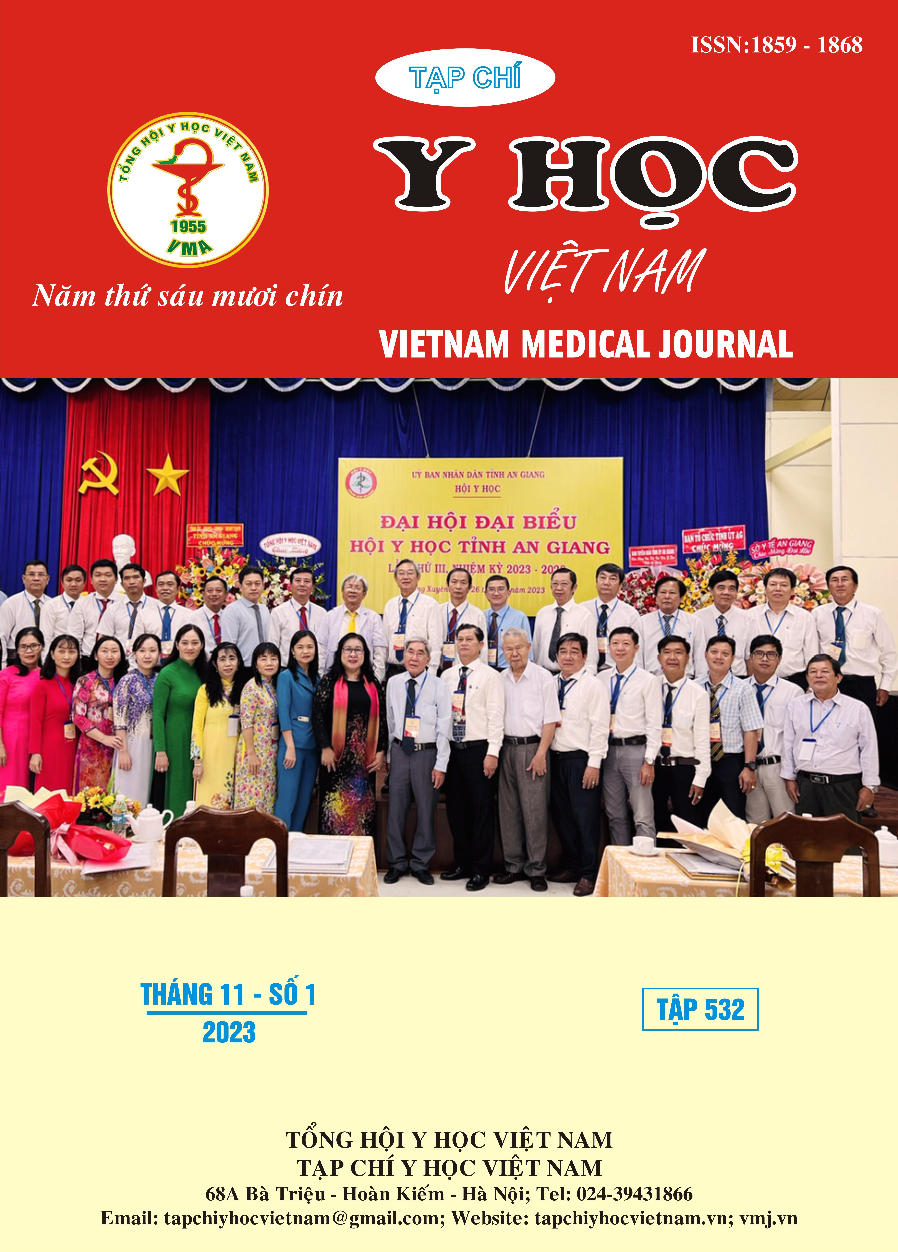CLINICAL, PARACLINICAL CHARACTERISTICS AND EVALUATION OF NASAL CONTINUOUS POSITIVE AIRWAY PRESSURE IN THE TREATMENT OF ACUTE RESPIRATORY FAILURE IN PREMATURE INFANTS AT DONG THAP GENERAL HOSPITAL IN 2022 – 2023
Main Article Content
Abstract
Background: Acute respiratory distress is a leading cause of mortality in premature infants. The use of Nasal Continuous Positive Airway Pressure (NCPAP) enhances oxygen supply and reduces the mortality rate associated with acute respiratory distress in premature infants. Objective To describe the clinical and subclinical characteristics, related factors, and evaluate the outcomes of NCPAP therapy in treating acute respiratory failure in premature infants at Dong Thap General Hospital in 2022 - 2023. Material and methods: A descriptive study was conducted on 125 premature infants with respiratory distress who were treated with NCPAP at Dong Thap General Hospital from July 2022 to July 2023. Results: The rate of respiratory distress was higher in male infants compared to females (69.6% vs. 30.4%). Infants with a birth weight of ≥ 1500g accounted for 78.4%, and those with a gestational age of ≥ 32 weeks accounted for 66.4%. The success rate of continuous positive pressure ventilation via the Benveniste valve was 89.6%. Factors such as birth weight <1500g, gestational age < 32 weeks, and FiO2 ≥ 40% after 1 hour of NCPAP use were associated with the NCPAP therapy outcomes. Conclusion: Nasal Continuous Positive Airway Pressure with the Benveniste valve is an effective method for treating respiratory distress in premature infants.
Article Details
Keywords
Acute respiratory failure, premature infants, nasal continuous positive airway pressure
References
2. Nguyễn Việt Thanh (2015), Nghiên cứu đặc điểm lâm sàng, cận lâm sàng và đánh giá kết quả điều trị hội chứng suy hô hấp ở trẻ non tháng của hệ thống ncpap tại khoa sơ sinh bệnh viện nhi đồng Cần Thơ Trường Đại Học Y Dược Cần Thơ.
3. Trần Duy Vũ, Nguyễn Thị Yến, Lê Thị Hồng Hanh (2021), "Hiệu quả của thở áp lực dương liên tục qua mũi trong điều trị suy hô hấp cấp ở trẻ em tại bệnh viện nhi Trung Ương", Tạp chí Y học Việt Nam, 506(1), tr. 145-148.
4. Mã Thị Hải Yến, Khổng Thị Ngọc Mai (2021), "Kết quả điều trị suy hô hấp ở trẻ sơ sinh non tháng bằng thở áp lực dương liên tục qua mũi tại bệnh viện trung ương thái nguyên", Tạp chí khoa học và công nghệ đại học Thái Nguyên, 226(14), tr. 251-257.
5. P. A. Dargaville, A. Aiyappan, A. G. De Paoli, et al (2013), "Continuous positive airway pressure failure in premature infants: incidence, predictors and consequences", Neonatology, 104(1), pp. 8-14.
6. Abdur Rehman, Ahmad Iqbal Quddusi, Aashee Nadeem, et al (2021), "Early nasal continuous positive airway pressure in premature neonates with Respiratory Distress Syndrome", The Professional Medical Journal, 28(07), pp. 957-962.
7. R. D. M. Sneha Reddy, Seshagiri Koripadu, Harischandra Venkata Yanamandala (2021), "Use of early nasal continuous positive airway pressure in premature neonates with hyaline membrane disease (neonatal respiratory distress syndrome)", International Journal of Contemporary Pediatrics 8(3), pp. 488-494
8. N. N. Hameed, R. K. Abdul Jaleel, O. D. Saugstad (2014), "The use of continuous positive airway pressure in premature babies with respiratory distress syndrome: a report from Baghdad, Iraq", J Matern Fetal Neonatal Med, 27(6), pp. 629-32.


